The Big Five: A Safari Legend
The term "Big Five" was originally coined by big-game hunters to describe the five most difficult animals to hunt on foot. Today, these animals—lions, leopards, elephants, buffalo, and rhinos—are more commonly associated with wildlife conservation and tourism, representing the most iconic and charismatic species that travelers hope to see on safari. Each member of the Big Five has unique characteristics and behaviors, making every encounter special and unforgettable.
How to Spot the big Five
Imagine the thrill of the African savannah stretching before you, the sun rising over the horizon, and the anticipation of encountering the majestic wildlife that roams these untamed landscapes. Tanzania, renowned for its vast and diverse ecosystems, offers one of the most spectacular safari experiences in Africa. With world-famous destinations like the Serengeti, Ngorongoro Crater, and Selous Game Reserve, Tanzania is a prime location for witnessing the iconic Big Five: lions, leopards, elephants, buffalo, and rhinos. This comprehensive guide will take you through the top safari destinations and essential tips for spotting these incredible animals, ensuring your Tanzanian safari adventure is truly unforgettable.
1.Lions: The Kings of the Savannah
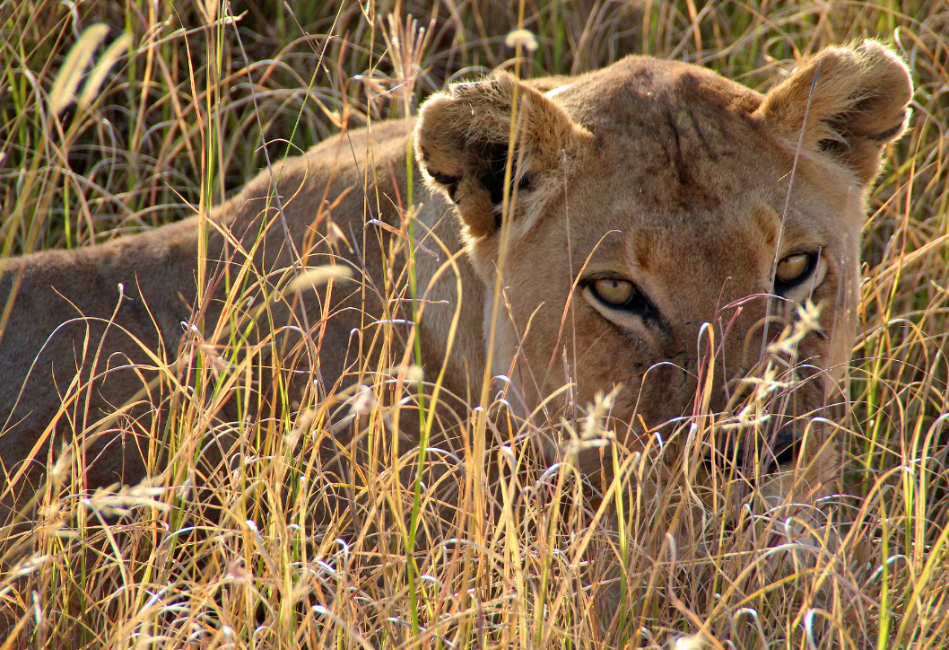
The lion, often referred to as the "King of the Jungle," is perhaps the most iconic of the Big Five. With their majestic manes and powerful presence, lions epitomize the wild beauty of Africa. In Tanzania, they are commonly found in prides, with each pride consisting of related females and their offspring, along with a few dominant males.
Where to Spot Lions:
- Serengeti National Park: The Serengeti is a prime location for spotting lions, especially during the Great Migration when prey is plentiful. The park's vast plains and rocky outcrops, known as kopjes, provide ideal habitats for these apex predators.
- Ngorongoro Crater: This natural amphitheater is home to a high concentration of lions. The crater's enclosed environment offers excellent visibility, making it easier to spot these magnificent cats.
Tips for Spotting Lions:
- Early Mornings and Late Afternoons: Lions are most active during the cooler parts of the day, so plan your game drives around dawn and dusk for the best chances of seeing them.
- Look for Elevated Areas: Lions often rest on kopjes or other elevated areas to have a goog overview their territory and stay cool. Keep an eye out for these natural lookout points.
Leopards: The Elusive Masters of Stealth
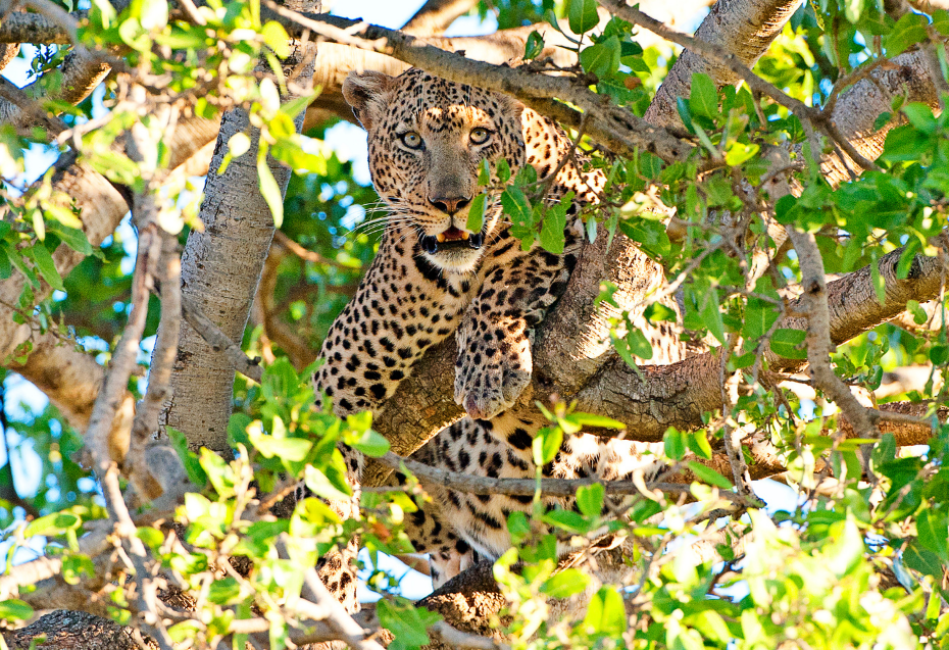
Leopards are the most elusive of the Big Five, known for their solitary nature and incredible stealth. These graceful and agile cats are expert climbers, often seen lounging in trees during the day to avoid the heat and stay safe from other predators.
Where to Spot Leopards:
- Serengeti National Park: The Seronera area of the Serengeti is particularly known for leopard sightings. The area's rocky outcrops and riverine forests provide perfect cover for these elusive cats.
- Lake Manyara National Park: Though more famous for its tree-climbing lions, Lake Manyara also offers good opportunities to spot leopards in the park's dense forests.
Tips for Spotting Leopards:
- Look Up: Leopards often rest in trees during the day, so scan the branches carefully. Their spotted coats blend perfectly with the dappled light, making them hard to spot.
- Patience is Key: Leopards are shy and reclusive. Spend time quietly observing likely areas, such as riverbanks and wooded areas, for a chance to see one.
Elephants: The Gentle Giants
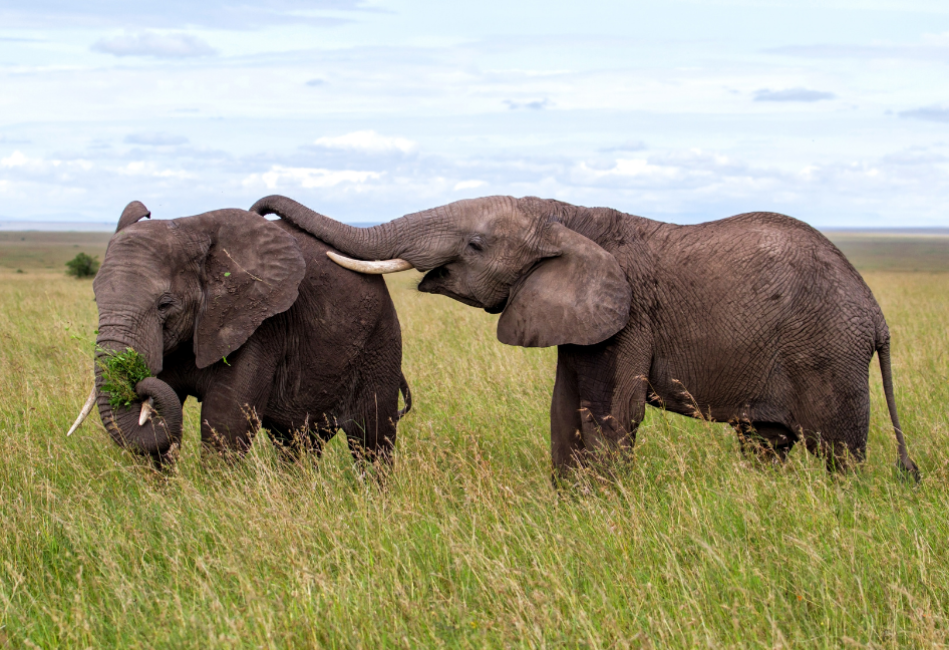
Elephants, the largest land mammals on Earth, are a cornerstone of Tanzania's wildlife. These intelligent and social animals are known for their strong family bonds and impressive memory. Seeing a herd of elephants roaming the savannah or bathing in a waterhole is a truly awe-inspiring experience.
Where to Spot Elephants:
- Tarangire National Park: Known for its large elephant herds, Tarangire is an elephant lover's paradise. The park's Tarangire River attracts these gentle giants, especially during the dry season.
- Ngorongoro Crater: Elephants, particularly older bulls, are frequently seen wandering the crater floor, often around Lerai Forest.
Tips for Spotting Elephants:
- Visit Water Sources: During the dry season, elephants gather around waterholes and rivers. This is an excellent time to observe their social interactions and playful behavior.
- Listen Carefully: Elephants communicate using low-frequency sounds that can travel long distances. Sometimes, you can hear them before you see them.
Buffalo: The Powerful Herds
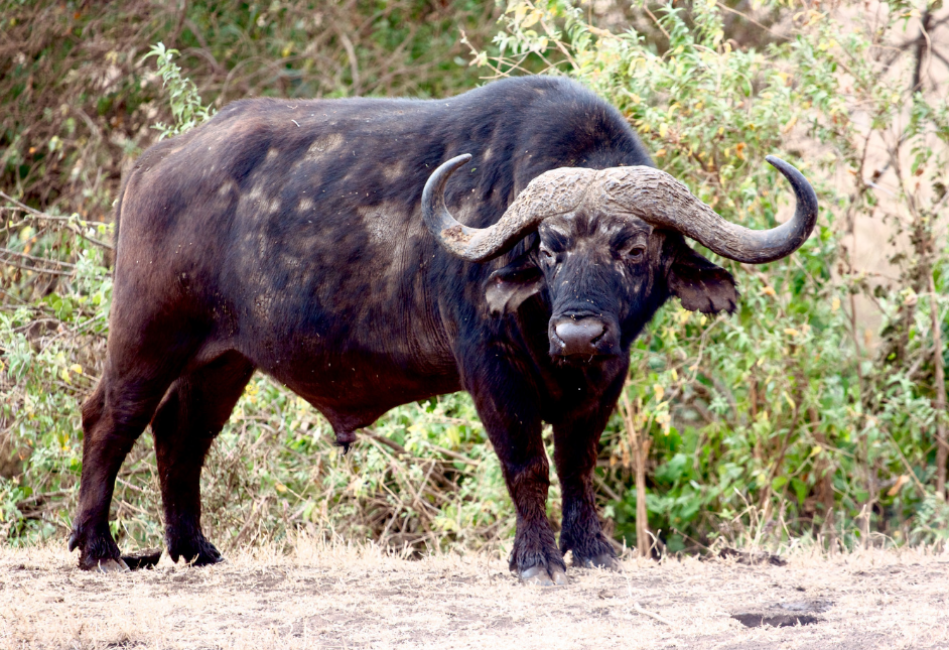
African buffalo, also known as Cape buffalo, are formidable animals known for their size, strength, and unpredictable nature. Often seen in large herds, buffalo are highly social and display complex behaviors within their groups. Despite their docile appearance, they are considered one of the most dangerous animals in Africa.
Where to Spot Buffalo:
- Serengeti National Park: The Serengeti's grasslands provide ample grazing opportunities for large herds of buffalo. They can often be seen in mixed herds with wildebeest and zebras.
- Ruaha National Park: Ruaha's diverse habitats support a healthy population of buffalo. The park's vast, open spaces make for easy viewing of these massive animals.
Tips for Spotting a Buffalo:
- Early Morning and Late Afternoon: Like many other animals, buffalo are most active during the cooler parts of the day.
- Stay in the Vehicle: Buffalo can be unpredictable and aggressive. It's safest to observe them from the safety of your safari vehicle.
Rhinos: The Rare and Resilient
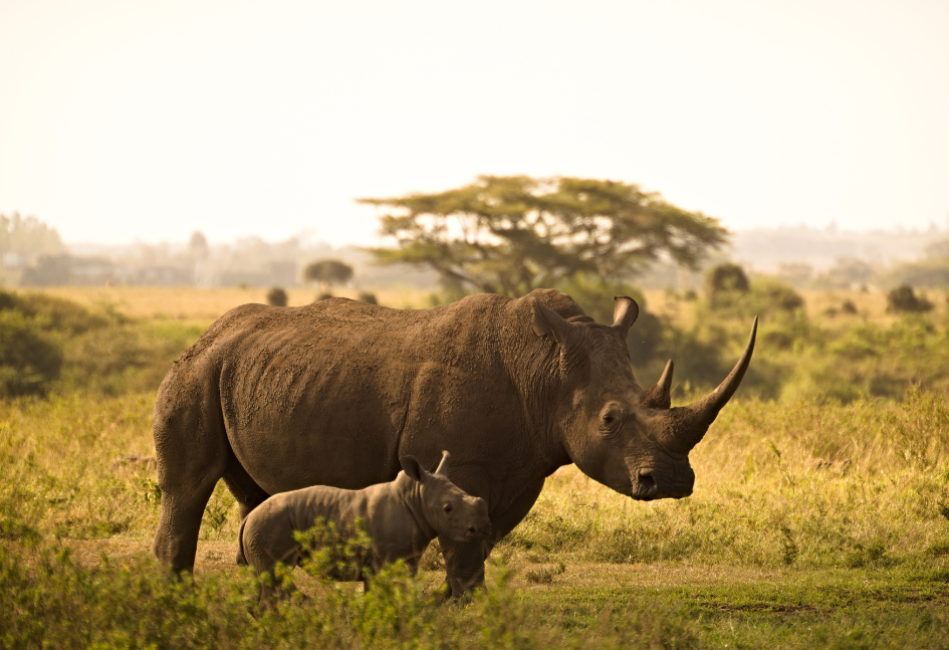
Rhinos are among the most endangered species in the world, making sightings incredibly special. Tanzania is home to both black and white rhinos, though they are not as commonly seen due to their low numbers and the ongoing threats of poaching.
Where to Spot Rhinos:
- Ngorongoro Crater: The Ngorongoro Crater is one of the few places in Tanzania where you can still see black rhinos in the wild. Conservation efforts have helped protect this critically endangered species in the area.
Tips for Spotting Rhinos:
- Use Binoculars: Rhinos are often spotted at a distance, so binoculars can enhance your viewing experience.
- Respect Their Space: Rhinos can be easily stressed by human presence. Maintain a respectful distance and avoid making loud noises.



